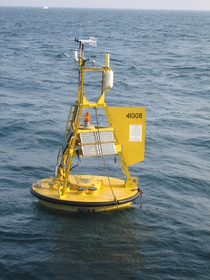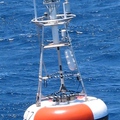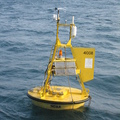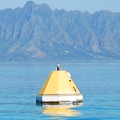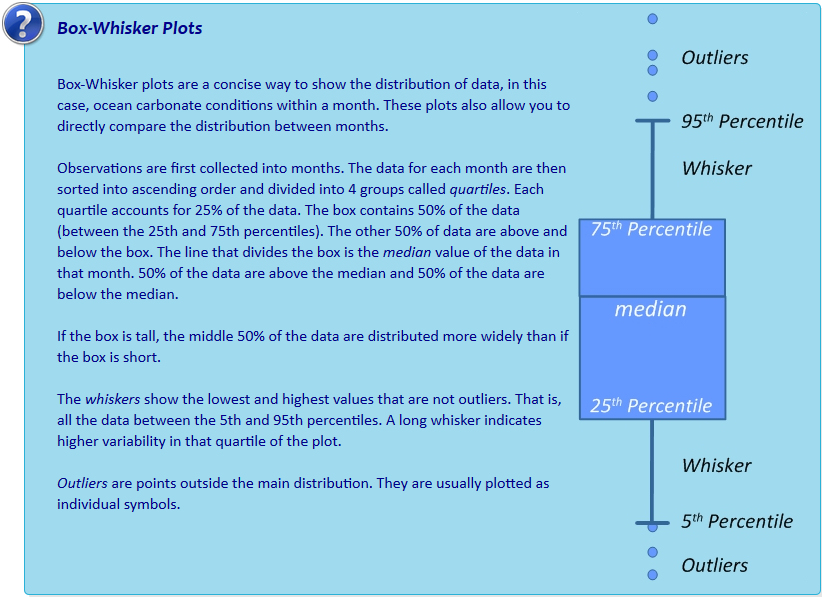Grays Reef
National Data Buoy Center buoy at Gray's Reef, Georgia (31.40°N, 80.87°W)
Gray's Reef National Marine Sanctuary was established to conserve, protect, and enhance the biodiversity, ecological integrity and cultural legacy of Gray's Reef. It is one of the largest near-shore live-bottom reefs (~16 square miles) of the southeastern United States and is the only protected natural reef area off the Georgia coast in the US.
The National Data Buoy Center (NDBC) Mooring 41008 is located 40 nautical miles Southeast of Savannah, Georgia in Gray's Reef National Marine Sanctuary. On July 17, 2006 PMEL in collaboration with NDBC and researchers from the University of Georgia deployed a MAPCO2TM system on the NDBC 41008 buoy. Dr. Scott Noakes and Wei-Jun Cai are collaborating with us to maintain the system and have been deploying other sensors and making a variety of biogeochemical measurements in the Sanctuary. For more information about complimentary projects at Gray's Reef visit the Gray's Reef researcher's webpage.
On September 19, 2011, a surface seawater pH sensor was added to the Grays Reef mooring. By measuring pH in addition to pCO2, we are able to more accurately and precisely study the changes associated with ocean acidification. All seawater pH observations are shown in the second figure below. This project is supported by NOAA's Ocean Acidification Program.
Finalized Data: National Centers for Environmental Information NCEI.
Plots of surface water and atmospheric CO2 and surface water pH (click+drag to zoom):
Monthly climatology of surface seawater aragonite saturation state (Ω) and pH:
Interactive box plots below are observations binned by month as described in Sutton et al., 2016. Pie charts represent % of observations within each month that fall below the adjustable line. This adjustable line is meant to provide a tool for assessing potential biological thresholds. For example, setting the line to Ωaragonite of ~2.0 would assess monthly exposure of Pacific oyster larvae to sub-lethal chronic effects in regions where these larvae occur naturally or in hatcheries (see studies here and here).

